
Cambridge - Its Railways and Station[Source:
Darren Kitson]
Part 5: British Railways - The steam era (continued)
For variety and still in 1948 is a train entering the down loop at Long Road. Three years after the war ended, military traffic was still an everyday sight on the railways. The tank appears to be one of the several variants of the M4, better known as the Sherman. The playing fields on the right are still there today. On the railway, only the down loop now remains and this view is now blighted by overhead catenary. Off the image to the left, the site of the once busy Trumpington sidings (the location of the 1922 station) is now becoming quite wooded.
Somewhat out of period but convenient for comparison purposes, the above view dates from April 1971. The up loop is still in situ and the image provides a rare view of Trumpington signal box. The tracks of Trumpington sidings have been lifted and in the left background the buffer stops are seen. These are what by this time remained of the former Bedford line, which had otherwise been lifted two years earlier. The remaining track was used as a headshunt for the former LNWR goods yard, by then an oil terminal and coal concentration yard. Cambridge Goods Yard signal box once stood in the centre distance and Trumpington Ground Frame was off the image to the left. The class 31 is working the 12.18pm Whitemoor - Hitchin goods; a couple of minutes after passing Long Road it will branch off onto the King's Cross line at Shepreth Branch Junction. The year 1971 was the start of a rather dull period, at least for enthusiasts, on the railway at Cambridge. A number of closures had already taken place and it was the final year of the Baby Deltics and the little BTH class 15s, both having been a common sight at Cambridge as they left trails of smoke behind them - the class 15s being almost as bad as the Baby Deltics in that respect, especially if they had been standing idling for a while. Only five or six years prior to the above photograph being taken, Trumpington sidings could be seen holding withdrawn Southern steam locomotives, including Bulleid Q1s, waiting onward movement to King's scrapyard, Norwich. To avoid such movements through London, many of the scrap locos arrived at Cambridge via the Bedford line presumably having travelled via Oxford. One such working occurred on 13 April 1964 when 8F 48361 dumped Southern U1 31894 and K 32343 at Cambridge before legging it away light engine along the Bedford line. These two, however, were dumped at Cambridge shed. Withdrawn former GWR locomotives were also a common sight at Cambridge, dumped awaiting onward movement. Most photographs showing Trumpington sidings depict them in disuse or with the track lifted. Photographs actually taken within the sidings and when still in use are extremely rare. Above is one such, taken in November 1964. The locomotive is a Southern Q class, while behind it is an unidentified Southern Bulleid Q1 0-6-0. Both are awaiting onward movement to King's scrapyard at Norwich. As already mentioned, Trumpington sidings and Cambridge shed yard became temporary home to numerous withdrawn steam locomotives awaiting scrap during the 1960s. The view, above, is looking north-west and the telegraph pole in the background is alongside the Bedford line. Details of the carriages are not known; they could also be awaiting scrap and that on the right has a hint of Southern electric multiple unit about it but not much Southern corridor EMU stock was being withdrawn at this time. The carriages are more likely either stabled or in storage; BR had a lot of spare rolling stock at this time with much of it seeing use only during the summer or at bank holidays or for weekend excursion traffic. While we should be thankful such photographs exist, it is unfortunate that details accompanying them rarely go into detail beyond the main subject which in this case is 30546.
Above is another view of Trumpington Sidings in use. This time another of the Ivatt 'Flying Pigs' is lurking, 43005 apparently. The date is 14 July 1951 and the locomotive is still in original condition but would later receive a single chimney (and probably a good clean).
The above and the following three images were all taken during August 1949 around Cambridge shed. Above is D16 62527 with full lettering on the tender but no smokebox numberplate. In the background lurks a J15 and a J67 0-6-0T. The full British Railways tanks busied themselves around Cambridge on pilot duties until replaced by diesel shunters or, occasionally, BTH class 15s commandeered for the purpose.
Above, a rather scruffy J15 still in LNER livery approaches platform 6. On the left of the above image lurks another J15. The Worsdell J15s were by this time becoming rather antiquated but they were simple, reliable and could show a good turn of speed when required. The sole survivor is 65462 of the North Norfolk Railway.
At almost the same spot as the previous image is Ivatt 2MT 6402 arriving at platform 5 with the crew of a B1 looking on. The 2MTs were another LMS design common at Cambridge with three, 46465/6/7 allocated when brand new. The Cambridge allocation worked on the Mildenhall branch and the Stour and Colne Valley lines. 6402 would soon become 46402. She carries a 15B Kettering shedplate so will be arriving with a train from that town. The SC below the shedplate indicates self cleaning. This did not mean the locomotives washed and polished themselves (!), it referred to the self cleaning smokebox; these contained a baffle arrangement which pulverised ash into dust before ejecting it from the chimney. It was one of the features incorporated into the BR Standard designs to make the work of crews easier. A number of the Ivatt 2MTs have survived into preservation. Above, another scruffy J15 apparently bearing no identification other than its former LNER cabside number. The locomotive is sitting at the end of platform 6, probably having been released from an incoming train and waiting to go on-shed. This example was one of several J15s fitted with a tender-cab for when running tender first, mainly on the Colne Valley Line (Haverhill - Chappel via Halstead) where no turntables were available. The Ivatt 2MTs were so fitted from new and a few E4s were also so fitted from their little holiday on the Stainmore line; a wild and lonely place, as Private Frazer would have said.
Above is class F6 2-4-2T 67236 at Cambridge in February 1951. Various types of GER 2-4-2T were always to be found at Cambridge, many of which, including the F6, being originally built for suburban services. The F6s had condensing gear when new but this was removed by the LNER. All had been withdrawn by 1958. There appears to be much changing of springs going on. During the 1950s a large number of surplus locomotives were stored at Cambridge shed; 2-4-2 and 0-6-0 tanks of various classes; E4s; J15s; C12s and a number of other types. They were easy to spot due to their dirty condition and covered chimneys. Some were withdrawn after a period of storage but many were rotated around by re-entering service with their place in storage being taken up by others.
Above is class B17 61623 'Lambton Castle' outside Cambridge shed in February 1951. She was a Cambridge locomotive at this time and has received the cycling lion logo on the tender. This was the emblem which quickly received the derogatory nickname 'The Emaciated Ferret'. It was the railway version of the British Transport Commission logo and as the lion / ferret always face forwards there had to be two versions; one for each side of the locomotive or tender. The same applied to the later and more familiar totem version.
The above two images also date from February 1951 and were taken within a short time of each other. The first view is taken from the coaling tower looking north; locos seen are a B1, an Ivatt 4MT, either an E4 or a J15 and an Austerity 0-6-0ST.
Above is class B17 61619 'Welbeck Abbey' looking very smart leaving Cambridge with a stopping service to King's Cross in May 1949. She is in lined green livery with her home shed displayed on the buffer beam. It was to be another year or so before BR coded Cambridge shed as 31A and so-indicating smokebox shedplates began to appear. This was an LMS innovation which ultimately was used across the entire BR network. The lettering on the end of the articulated suburban stock states King's Cross Outer Suburban but is probably abbreviated to Kings X Outer Sub. This was standard practice on stock dedicated to these services and also applied to the BR-built non corridor stock. Stock for the inner suburban services was also marked accordingly. The diesel multiple units which later shared the suburban services were never so marked. Click here to continue Part 5:
|
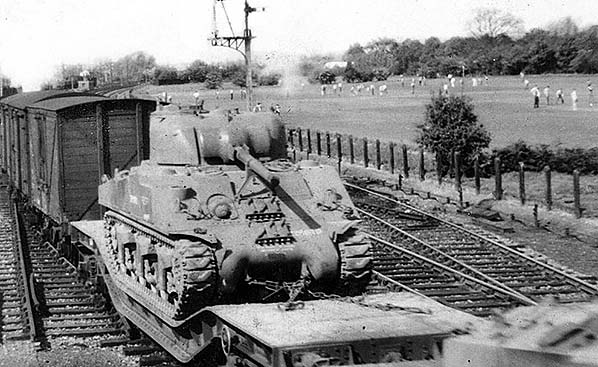
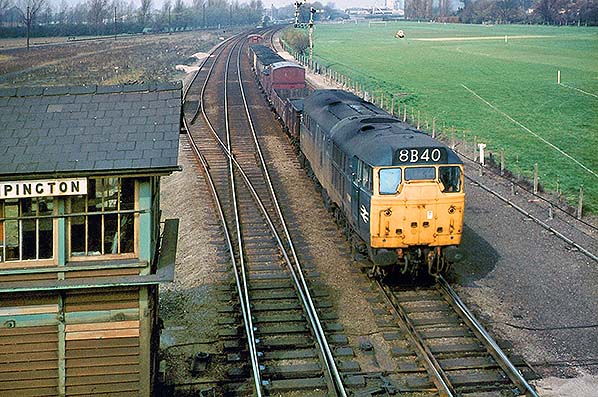
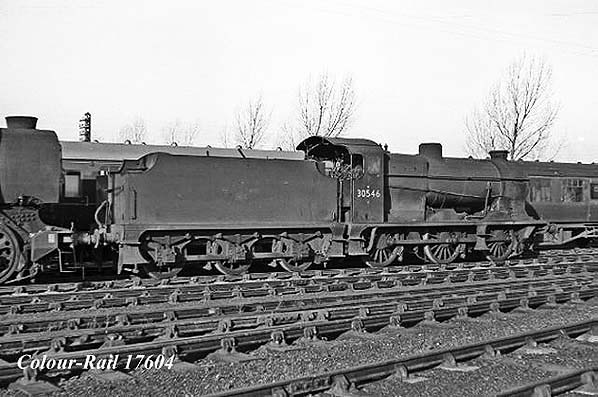
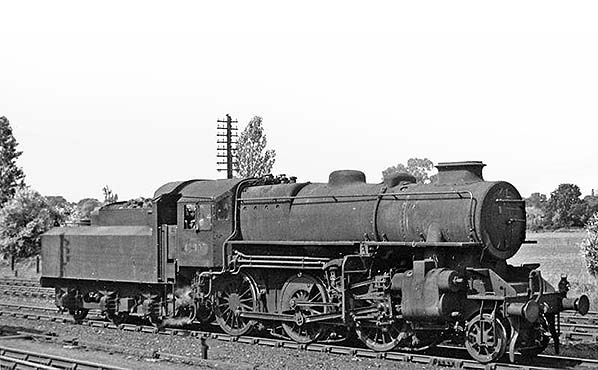
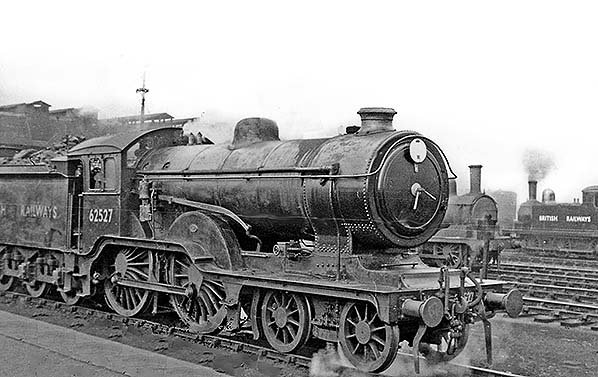
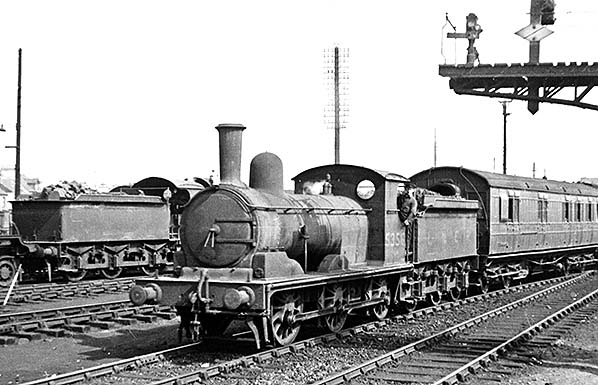
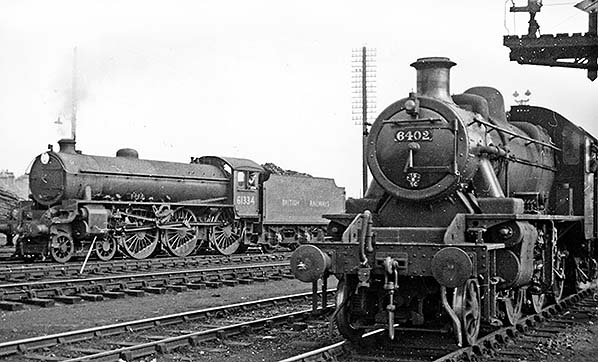
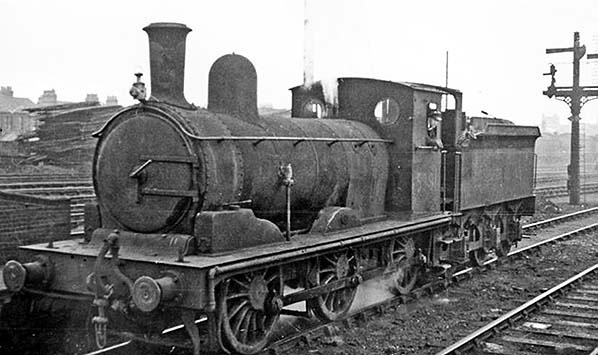
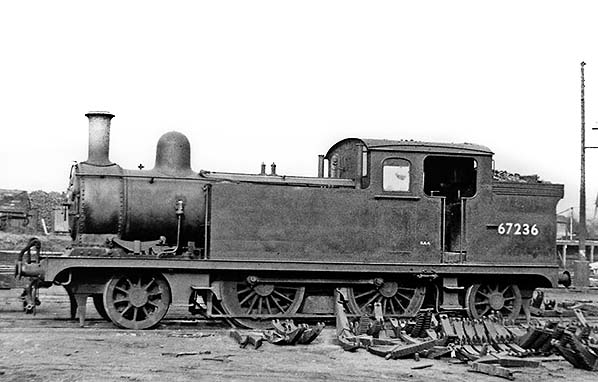
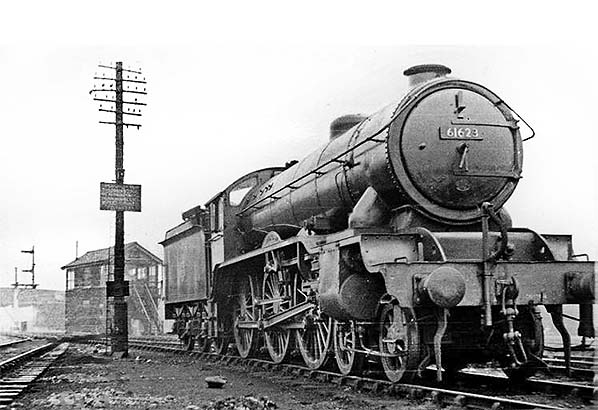
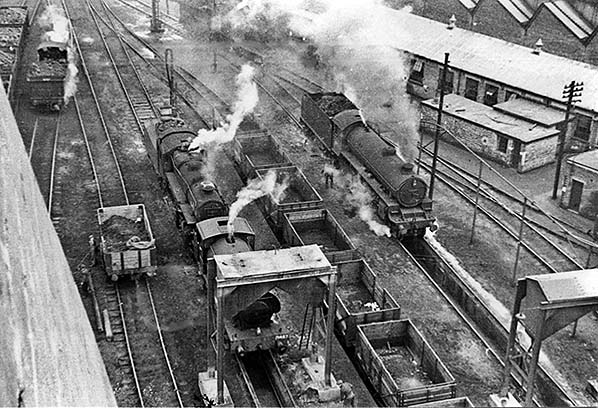
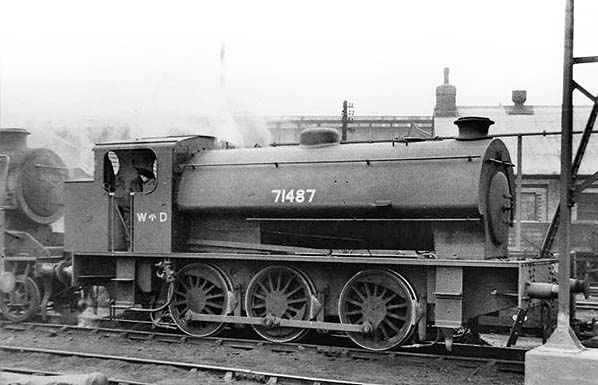
 After the war the LNER purchased 75 and these became class J94 8006 - 8080 and under BR 68006 - 68080. The last examples with BR were withdrawn in 1967 but countless others continued to serve industry for many years thereafter, especially with the National Coal Board. Two ex LNER / BR examples, 68077/8, survived into preservation and there are several others painted-up as BR examples. The LNER / BR examples differed to the industrial versions in that they had an extra set of steps mounted roughly midway along the running plates and extended coal bunkers. The latter modification was glaringly obvious and the ex-industrial loco painted-up to look like BR locomotives therefore look rather unconvincing to those in the know.
After the war the LNER purchased 75 and these became class J94 8006 - 8080 and under BR 68006 - 68080. The last examples with BR were withdrawn in 1967 but countless others continued to serve industry for many years thereafter, especially with the National Coal Board. Two ex LNER / BR examples, 68077/8, survived into preservation and there are several others painted-up as BR examples. The LNER / BR examples differed to the industrial versions in that they had an extra set of steps mounted roughly midway along the running plates and extended coal bunkers. The latter modification was glaringly obvious and the ex-industrial loco painted-up to look like BR locomotives therefore look rather unconvincing to those in the know.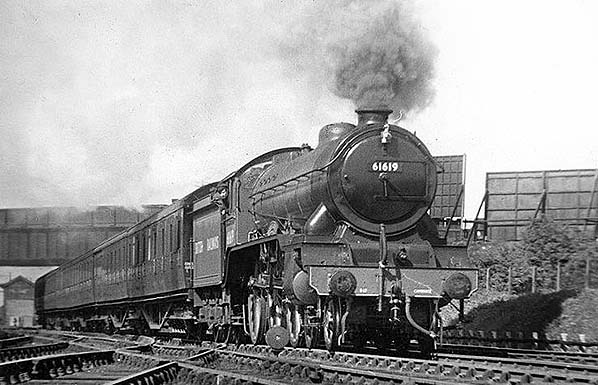

 Home Page
Home Page